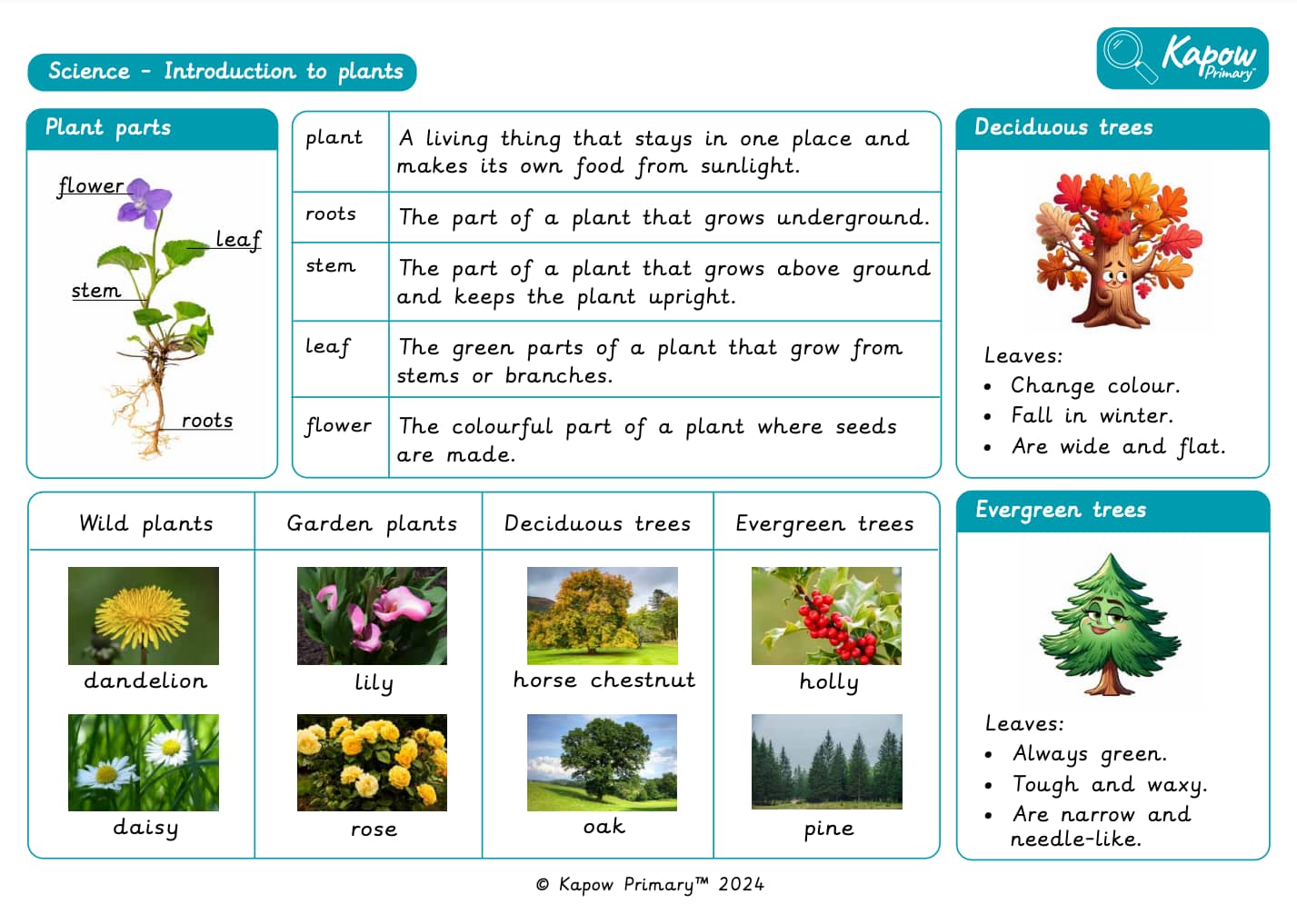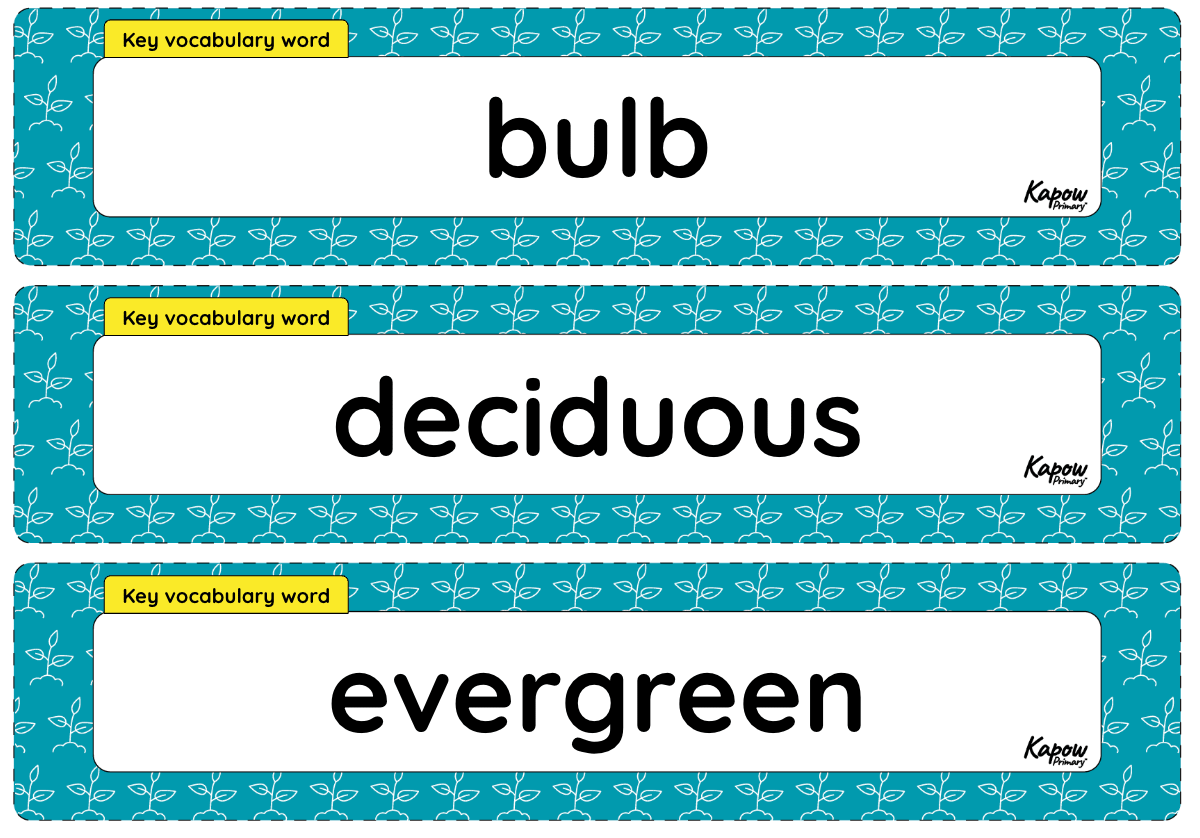Y1/2 (A): Plants: Introduction to plants
Identifying and naming a variety of plants and investigating if beans need water for growth.
The Curriculum and Assessment Review final report has been released. We’re reviewing the recommendations and planning for future updates. Learn more
Unit outcomes
Pupils who are secure will be able to:
- Identify plants and their features.
- Recall some of the roles that flowering plant parts have.
- Name some trees and their parts.
- Identify similarities and differences between deciduous and evergreen leaves.
- Recall that seeds and bulbs come from plants.
- Recognise that seeds need water for growth.
When working scientifically, pupils who are secure will be able to:
- Raise questions about plants and respond to suggestions on how to set up an investigation to answer a question.
- Use a magnifying glass to observe the different parts of flowering plants.
- Draw and label a diagram of a flowering plant.
- Use an identification chart to name flowering plants.
- Sort plants into groups based on specific criteria.
- Use non-standard units to measure leaf length.
- Recognise similarities and differences in seeds and bulbs.
- Recognise that predictions do not always match observations.
- Identify which plant parts can be eaten.
- Recognise that scientific research into plants leads to important discoveries.
Please note that Kapow Primary Science lessons are designed to be 1 hour and 30 minutes long to reflect the requirements of a core subject.
Suggested prior learning
This is the first unit in the Kapow Primary scheme.Lessons
Y1/2 (A): Lesson 1: What is a plant?
Knowledge
- To identify plants in the school grounds.
Working scientifically
- To plan an investigation.
Y1/2 (A): Lesson 2: Parts of a plant
Knowledge
- To identify parts of a flowering plant.
Working scientifically
- To draw and label a diagram.
Y1/2 (A): Lesson 3: Wild and garden plants
Knowledge
- To identify and name wild and garden plants.
Working scientifically
- To sort flowers into groups.
Y1/2 (A): Lesson 4: Deciduous and evergreen trees
Knowledge
- To identify and name deciduous and evergreen trees.
Working scientifically
- To measure and compare leaves.
Y1/2 (A): Lesson 5: Sorting seeds
Knowledge
- To recognise that new plants come from seeds and bulbs.
Working scientifically
- To recognise that observations do not always match predictions.
Y1/2 (A): Lesson 6: Which plant parts can you eat?
Science in action
- To recognise the importance of a scientist’s role.
Working scientifically
- To use observations to find answers to questions.
Key skills
Related content
Unit resources

Knowledge organiser – Science Y1/2 (A): Plants: Introduction to plants
Aimed at pupils, a single page which gives key facts and definitions from the mixed-age unit 'Introduction to plants'.

Vocabulary display – Science Y1/2 (A): Plants: Introduction to plants
A display version of the vocabulary for the mixed-age unit 'Introduction to plants'.
Cross-curricular opportunities
English: Composing sentences before writing; punctuating sentences with capital letters and full stops.
Maths: Comparing and measuring leaf lengths.
Art: Drawing flowering plants.
Computing: Using devices to capture images and video.
Music: Listening to and joining in with songs.
Geography: Carrying out fieldwork on the school grounds.
History: Recognising the significance of scientists in the past.
British values: Mutual respect.

